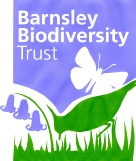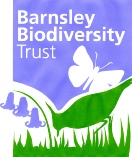


Barnsley Biodiversity Action Plan
Summary Table of Local Priority Habitats
|
UKBAP Broad Habitat Types |
UKBAP or National (S41) Priority Habitat |
Local Priority Habitats / Habitats of Importance in Barnsley |
|
|
Broadleaved, mixed and yew woodland |
Lowland mixed deciduous woodland [2259 ha] |
Mixed deciduous woodland with ancient woodland a particular priority. Mainly mixed oak-birch and some mixed ash woodland in Barnsley. |
|
|
|
Upland oakwood |
Upland oakwood. Only remnants in the Dark Peak. Upland oakwood characteristics are relevant for any replanting in this area. |
|
|
|
Wet woodland |
Wet woodland in Barnsley includes notable examples of willow carr and other wet woodlands with alder and ash as dominant trees. |
|
|
|
Lowland wood pasture and parkland [610 ha] |
Wood pasture and parkland.* Mainly on historic parkland in Barnsley. Veteran trees of importance wherever they are. |
|
|
|
Traditional orchards [6ha] |
Traditional orchard -some longstanding and some recent in Barnsley. |
|
|
|
|
Scrub. Although not identified as a national priority habitat, scrub is recognised locally as sometimes important for biodiversity. |
|
|
Coniferous woodland |
Coniferous woodland |
Although the plantations of coniferous woodlands in Barnsley are non-native in some cases they support specific important species of wildlife. |
|
|
Boundary and linear features |
Hedgerows |
Hedgerows with 80% or more of at least one native woody species of tree or shrub. When ancient or ‘species rich' especially significant. Other boundary and linear features can be of importance. |
|
|
Arable and Horticultural |
Arable field margins |
Arable field margins* and ‘in-field’ measures designed to benefit key farmland species in arable areas. |
|
|
Improved grassland |
|
Amenity grassland. Although not a national priority habitat, recognised locally as capable of being managed to support biodiversity. |
|
|
|
Coastal and floodplain grazing marsh [66 ha] |
Floodplain grazing marsh. Wet neutral grassland periodically flooded on some floodplains in the river Dearne valley. |
|
|
Neutral grassland |
Lowland meadows [64 ha] |
Neutral grassland -unimproved and semi-improved. Pastures or meadows. Also in recreational sites, churchyards, roadside verges etc. |
|
|
Acid grassland |
Lowland dry acid grassland [184 ha] |
Acid grassland -unimproved or semi-improved. Pastures, field corners, banks and roadside or track verges. |
|
|
Calcareous grassland |
Calcareous grassland |
Calcareous grassland not found in Barnsley except on previously developed land. |
|
|
Dwarf shrub heath |
Upland heathland [296 ha] |
Upland heathland. 25% or more coverage of dwarf shrubs on slopes of moors in west of Barnsley above enclosed pastures and 300m contour. |
|
|
|
Lowland heathland [10 ha] |
Lowland heath. 25% or more coverage of dwarf shrubs below 300m contour. Lowland scarce and fragmented in Barnsley, on the edges of slopes of sandstone hills, on former commons, and on former pit-stacks. |
|
|
Fen, marsh and swamp |
Reedbed [9 ha] |
Reedbeds. Permanently flooded, sizeable individual or groups of reedbeds, or capable of being extended. |
|
|
|
Lowland fen [8 ha] |
Lowland fen. Remnants in the Dearne valley, tall herbaceous plants, rushes, sedges and reed grasses on a wet, peaty soil.. |
|
|
|
Upland flushes, fens and swamps [31 ha] |
Upland flushes, fens and swamps on moors and moor fringes, with mosses, rushes, sedges and reed grasses on a wet, often peaty soil. |
|
|
|
Purple moor grass and rush pasture |
Purple moor grass and rush pasture. Wet marshy grassland with rushes and purple moor grass, upland fringes and some lowland areas. |
|
|
Bog |
Blanket bog [2164 ha] |
Blanket Bog. Water-logged areas of cotton grass, moss, rush, sedge and heather (<25%) with underlying peat. Significant in Dark Peak. |
|
|
Standing water and canals |
Ponds |
Standing water and ponds includes all standing water capable of supporting biodiversity and especially populations of key species. |
|
|
Rivers and streams |
Rivers |
Running water, rivers and streams includes all rivers and streams capable of supporting biodiversity and especially populations of key species. |
|
|
Inland rock |
Open Mosaic Habitats on Previously Developed Land |
Open Mosaic Habitats on Previously Developed Land. Mosaic of early successional vegetation and bare substrate on modified soils. Other specialised habitats may also be found on modified soils. |
|
|
Built-up areas & gardens |
|
Built environment and gardens provide a habitat for many common and vulnerable species and can be managed to support biodiversity. |
|
